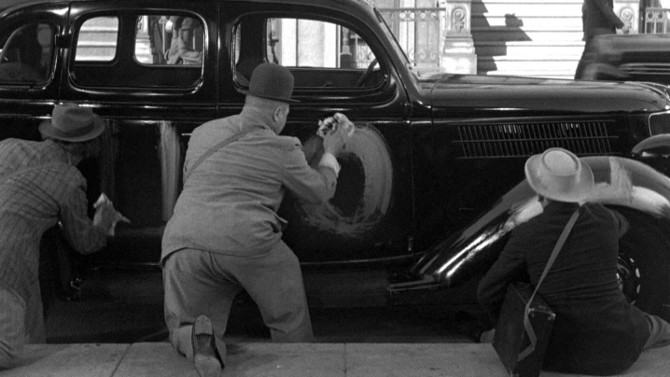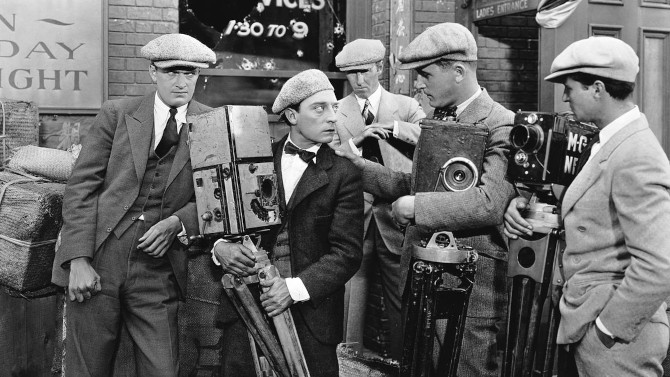
Plights, Camera, Action
Often deemed to be the last classic film made by the great Buster Keaton, The Cameraman (1928) was the final time the silent legend would have anything close to full creative control over one of his own features... as he folded his independent studio to sign with Metro-Goldwyn-Mayer (MGM) – who promptly made him their third highest paid star. Though his future would soon turn very bleak, this first film with the new studio was his own idea.
-
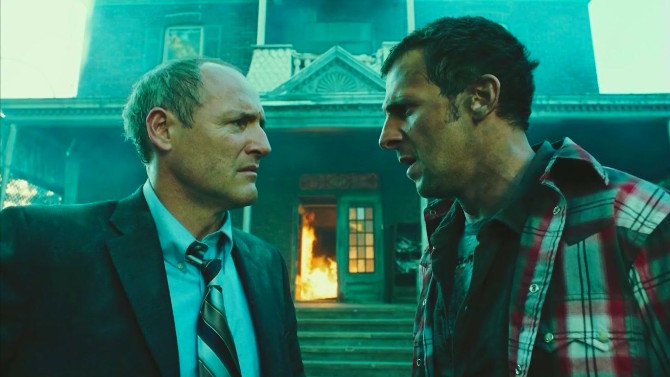
J’aime Bon Cop, Bad Cop. . . a Lot
Bon Cop, Bad CopJune 2, 2017Arguably the highest grossing Canadian domestic film of all-time (not including inflation), 2006's Bon Cop, Bad Cop skewers both official languages, pairing a stuffy English-speaking Provincial Police detective with a foul mouthed, bon vivant French detective for the Sûreté du Québec. Directed by Erik Canuel, the unusual pair are brought together when a body is found straddling the Ontario/Québec border sign (it is literally impaled on the metal welcome guidepost). Arguing over whose jurisdiction it falls under, Torontonian Martin Ward (Colm Feore) suggests that it is their case, as "his heart is in Québec", to which Montrealer David Bouchard (Patrick Huard – who also came up with the scenario for the film) wryly replies, "but his ass belongs to you".
-
A Double Dose of Hilarity
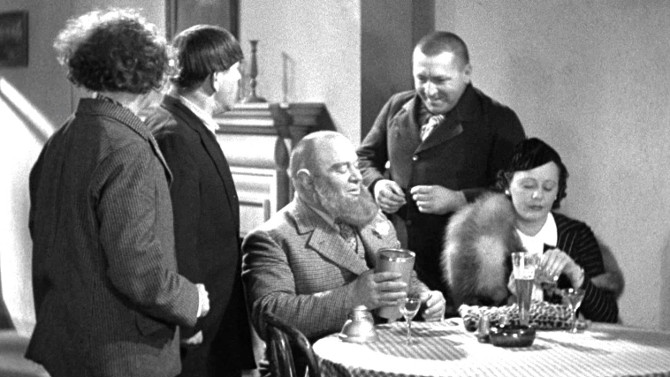 Grips, Grunts and GroansDizzy DoctorsMay 12, 2017
Grips, Grunts and GroansDizzy DoctorsMay 12, 2017Gaining prominence during The Great Depression, it is no secret why the silly, farcical slapstick comedy of The Three Stooges was a hit with audiences – as their crazy antics onscreen were able to give those watching a short respite from their complicated, downtrodden lives. Signing on with Columbia in 1933, the trio of nyuksters we all now know (Larry, Curly and Moe) became ‘short film’ icons in 1934 (prior to this, it was Ted Healy and His Stooges), continuously developing new projects (sometimes with Shemp or others) until their last in 1970 (their stint at Columbia ended in 1959 with their 190th feature) – an impressive run to say the least. Their first short of 1937 (and twentieth overall), Grips, Grunts and Groans (a very Stoogey title) finds the impoverished triumvirate riding the rails. Fleeing after getting the better of a pair of railroad police, they find themselves in a wrestling and boxing club, somehow befriending a behemoth named Ivan Bustoff (Harrison Greene). Run by the mob, the gangsters have placed a whopping bet on their wrestler.
-
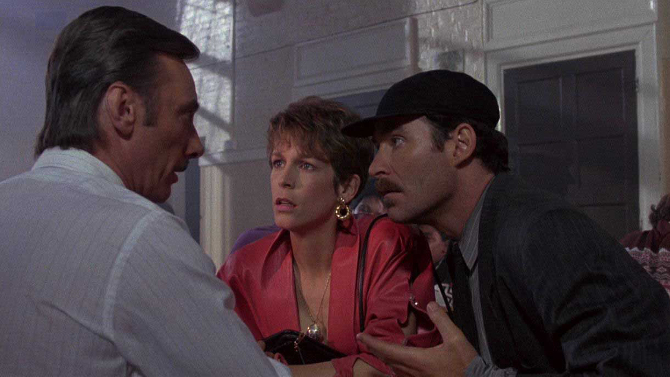
A Deliciously Fishy Caper
A Fish Called WandaApril 21, 2017Satirizing the stereotypical nature of Brits and Americans, John Cleese’s 1988 film A Fish Called Wanda, directed by Charles Crichton, is a kooky heist movie with loads of quirky humour. Following a gang of bank robbers, the group consists of a comic version of a femme fatale, Wanda (Jamie Lee Curtis), her secret lover pretending to be her brother, Otto (Kevin Kline), as well as an English duo, Georges Thomason (Tom Georgeson) and the severely stuttering Ken Pile (Michael Palin – he based the part on his father, who dealt with a similar issue). To further complicate things, Wanda is sleeping with Georges and is prone to flirting with Ken. Filled with doublecrosses and complications, Georges soon finds himself in jail – not knowing who put him behind bars. With only one quasi-witness, an elderly lady who spotted the man while they were driving away from the scene of the crime, the prisoner turns to his longtime compatriot Ken to finish the woman off in a way that will look accidental – knowing that without her, the case falls flat.
-
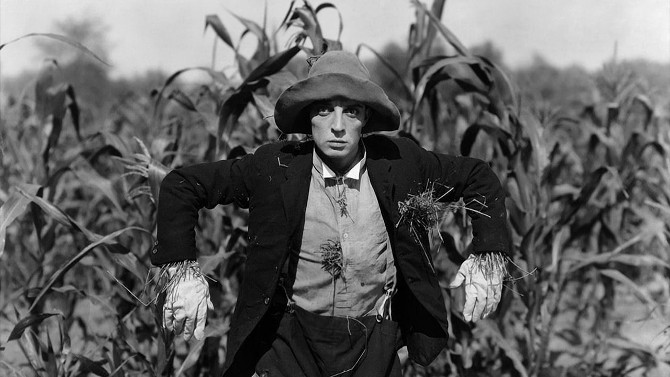
This Scarecrow has Quite the Brain
The ScarecrowApril 2, 2017I often wish the studio system would turn back time (in a sense) and begin to focus on developing short films again. A wonderful way to cultivate and produce young talents (think Charlie Chaplin or The Three Stooges), it also provides the audience with fun, brief excursions into fantastic worlds before even delving into the main feature. Comedy, drama, horror and even action work nicely in shortened versions, which is why I like to highlight certain pint-sized motion pictures from time to time – today, we will look at Buster Keaton’s 1920 comedy The Scarecrow. A premier example of ingenuity and the genius of motion, the nineteen minute tale follows two farmhands (diminutive Keaton and the much larger Joe Roberts – another example of the ever-comical combo of fatty and skinny) as they vie for the hand of the youthful and pretty farmer’s daughter (Sybil Seely). The two room together in a house of contraptions – the record player seconds as a stove, bed as a solid wooden piece of furniture/piano, bathtub as a settee and so on. Perhaps even more impressive is their dinner table design – ropes hang from the rafters on pulleys, meaning that everything from salt and pepper to food and beverages are attainable from anywhere at the table (Keaton had originally developed a similar mechanism at their family’s summer home when he was just a child). When done, they have a speedy way to do the dishes as well – afterwhich the ropes disappear and a light fixture descends from the ceiling. It is a spy’s house without the spy.
-
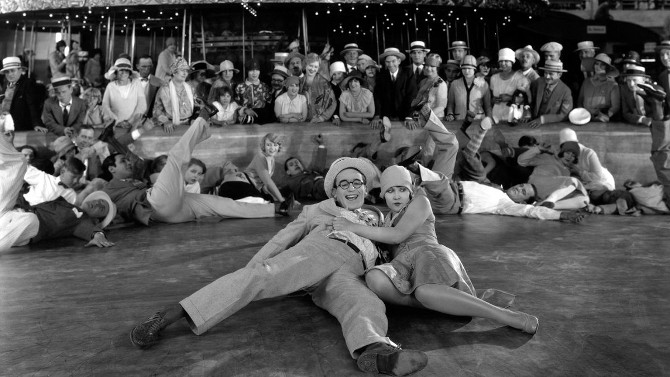
Need for Speedy
SpeedyMarch 12, 2017An unbelievable look back at 1920's New York City, Harold Lloyd’s final silent feature, 1928's Speedy, depicts The Big Apple in all of its hopeful Jazz Age glory. Featuring mind-boggling action and footage shot around the city, including old Yankee Stadium, down Broadway at beautiful Bowling Green, Coney Island in all of its former glory (Luna Park is on full display – it was ravaged by fire in 1944 and closed for good in 1946), Union Square in Manhattan, a ridiculous stunt in Washington Square Park as well as under the Brooklyn Bridge, and so many other places, it is a sweeping look at a city that has changed so very much over the ninety years since it was filmed there. The portion set near Sheridan Square in Greenwich Village (which is actually mostly an intricate set that Lloyd built in Hollywood), features a slower paced part of the city. With it having the last remaining horse-drawn streetcar route remaining, it highlights the final place in the metropolitan that has not been replaced by the hustle and bustle of the modern age. The streetcar owner is Pop Dillon (Bert Woodruff), whose granddaughter is Jane (Ann Christy), a young woman who is dating the job hunting Harold ‘Speedy’ Swift (Lloyd) – an ardent Yankees fan.
-
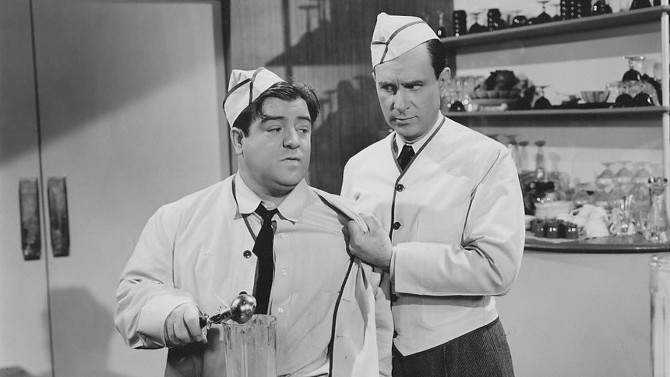
Murder at Midnight Can be Funny
Who Done It?October 30, 2016Combining a touch of horror and film noir within a murder mystery, Abbott and Costello once again add their unique brand of humour to dark subject matter in the 1942 classic comedic caper Who Done It?. Directed by Erle C. Kenton (Island of Lost Souls), this flick finds straight man Bud Abbott playing Chick Larkin while funny man Lou Costello portrays Mervin Q. Milgrim; together, they are a pair of simple-minded soda jerks on the bottom floor of a popular radio station. Yet, their true dream is to become head writers for a mystery themed radio show – which is why they took the low paying jobs in the highfalutin building. Finding writer Jimmy Turner (Patric Knowles) and secretary to the boss, Juliet Collins (Mary Wickes), in their midst while working at the soda and ice cream bar, they see this as a prime opportunity to pitch their idea. Turner takes a liking to the funny friends and invites them to a live taping of his program, Murder at Midnight.

